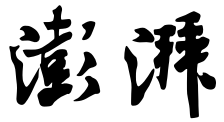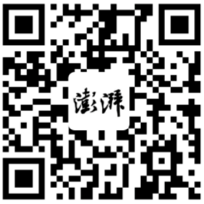- +1
Light人物:专访美、德、俄等多国院士Dieter Bimberg
原创 长光所Light中心 中国光学 收录于话题#Light人物6个
Light记者 | 郭宸孜
编者按
很荣幸能够邀请到半导体激光领域的领军科学家,德国科学院院士、美国国家工程院院士、俄罗斯科学院院士,Light Conference 2018大会主席和《eLight》编委,年近八十岁还在滑雪、潜水等极限运动的人生赢家——Dieter Bimberg接受我的采访。一直以来,Dieter Bimberg院士给我的印象是:
一、大佬风范,并不仅限于他三院院士和学术泰斗的身份,更多的是他海纳百川有容乃大的处事风格,永远都耐心倾听和思考别人的意见,并对青年科学家和晚辈给予格外的支持。
二、年轻、富有探索精神,在工作和生活中,都保持着充沛的精力和对新鲜事物的渴望。
三、品位高,对研究和食物以及音乐等有着极高的品位。
在这次采访中,Dieter Bimberg院士就量子点激光器和半导体激光器中的关键问题,做出了讨论和回答;并分享了其作为美国工程院外籍院士委员会、IEEE光子学会会士评委会主席等,在选拔成员或会士时,比较看重的因素;此外,Dieter Bimberg院士还分享了其对于Light会议和线上会议的看法,以及在极限运动方面的有趣体验。最后,Dieter Bimberg院士给出了自己认为在撰写学术著作时的重要考量,并向半导体激光器、纳米光子学器件、纳米材料和纳米结构专业的学生推荐了一些书籍。

Dieter Bimberg,德国科学院院士、美国国家工程院院士、欧洲科学院院士、俄罗斯科学院院士、美国发明院院士。先后担任德国亚琛工业大学教授、德国柏林工业大学教授、加州大学圣塔芭芭拉分校和惠普公司客座教授等,曾任德国联邦纳米技术卓越中心主席,是柏林工业大学纳米光子学中心的创始人,现任中科院长春光机所中德绿色光子学研究中心主任。Dieter Bimberg是量子点激光器的发明人之一,纵向光子晶体激光器概念的提出者,高速面发射激光器低功耗纪录创造者,是半导体激光领域的顶尖科学家。Dieter Bimberg院士发表了超过16000篇论文,61个专利,6本书,总引用量6.4万次,H因子高达111,为ISI web of knowledge高引作者,曾获俄罗斯国家科学技术奖,马克斯·玻恩奖, William Streifer奖,Heinrich-Welker奖,Nick Holonyak Jr.奖,以及联合国教科文组织纳米科学奖章等。
深度专访
Chenzi Guo: With Quantum dots (QDs) being discovered with high gain in 1990s, you were among the first to lead the research of QDs and invented QD lasers in the early 1990s. In the past decades, QD lasers have attracted enormous attention, what were the major difficulties when you worked on QD lasers. Do you have any intended ideas for QD lasers which have not been explored or realized yet?
Dieter Bimberg: The material gain of QDs is sensationally large, as discovered by us in 1993 and much larger than theoretically predicted by a team from Tokyo Institute of Technology in the 80s. The waveguide of a laser, where the light travels, shows absorption and scattering losses, which partly counterbalance the gain. The difficulty was to achieve a positive balance. We managed by stacking QD layers on top of each other without introducing crystal defects, up to ten for practical lasers. Secondly, we discovered how to grow low loss waveguides and avoid scattering of light in the waveguide, meaning minimize the losses.
We are working at CIOMP on QD lasers for automotive applications like LIDAR or sensing in a wavelength window predicted to show largest eye safety and largest range in foggy air. This window is not accessible to classical double heterostructure lasers based on GaAs or InP.
《Light》记者:高增益量子点(QD)于上世纪90年代被发现,您是最早引领量子点研究的人之一,并于90年代初发明了量子点激光器。在过去的几十年里,量子点激光器引起了极大的关注,您能否谈谈在研究量子点激光器时遇到的主要困难是什么?您当初对量子点激光器的哪些设想还有哪些尚未探索或实现的呢?
Dieter Bimberg:我们团队在1993年发现,量子点材料的增益高的惊人,这比80年代东京工业大学研究组的理论预测值要大的多。激光波导的吸收和散射损耗,在一定程度上抵消了增益,因此获取高增益的主要困难正在于此。首先,我们通过将量子点层叠在一起(可以实现多达10层的量子点层叠)而不引入晶体缺陷。其次,我们发现了如何生长低损耗的波导,避免光在波导中的散射,这意味着可以将损耗最小化。现在,我们在长春光机所的团队正在研究用于汽车应用的量子点激光器,如激光雷达或是在人眼最安全的波长范围内、在有雾天气实现最大射程的传感,而这样的波段,通常是无法用基于GaAs或InP的经典双异质结激光器来实现的。

Chenzi Guo: QD lasers have shown great promise in silicon photonics and are among the game changers in integrated optics. In the communication bands, QD lasers have stood out in practical use. Could you share some opinions about the trend of QD lasers and semiconductor lasers, in both researches and industries? What are the major obstacles in QD lasers applied in silicon photonics, and what cross-disciplines should be involved but were not paid enough attention?
Dieter Bimberg: The term ‘silicon photonics’ refers to integrating passive optical or still active devices like lasers based on III-V-compounds monolithically on Si and thus enabling an integrated technology, which would be advantageous from many different points of view. A lot of research in the last 10 years focused on growing QD layers on large Si substrates, thus enabling to fabricate lasers on Si substrates. After surmounting many difficulties presently, a number of groups all over the world have achieved good performance data for edge emitting lasers. Extended lifetime tests, which are finally decisive, are still missing.
Green photonics is presently thought to be a major sunrise direction of R+D with huge impact in particular on communication systems, like workstation clusters or supercomputers. Their energy consumption is now approaching or already surmounting 500 MW for new installations. Most of their energy is spent for interconnects in different distance ranges from module to module to workstation to workstation. Integration of surface emitting lasers on low energy but high-speed drivers based on CMOS technologies would bring at the same time cost and power consumption down. The VCSELs could be either based on QWs or QDs, depending on the expected emission wavelength. We are working on this integration in national and international teams.
《Light》记者:量子点激光器在硅基光子学领域展示出了巨大的发展前景,是影响集成光学领域规则的技术之一。在通信波段,量子点激光器已经在实际应用中大展身手。您能谈一谈量子点激光器和半导体激光器在研究和工业上的发展趋势吗?量子点激光器应用于硅基光子学的主要障碍是什么?有没有哪些研究和学科有可能对量子点激光器在硅基光子学的应用产生重要影响但没有引起足够重视的呢?
Dieter Bimberg: “硅基光子学”指的是将基于III-V族化合物的无源光学器件或静态有源器件(如激光器)整体地集成在硅上,从而实现集成技术,这从多方面来看都是有利的。近10年来,大量的研究集中于在大尺寸的硅衬底上生长量子点层,从而在硅衬底上制造激光器。在克服了许多困难之后,世界各地的一些研究小组已经取得了良好性能的边缘发射激光器。但是,最终具有决定性意义的延长寿命试验仍然处于困境。
此外,值得一提的是,绿色光子学被认为是相关科学研究和开发的一个主要趋势,它将对通信系统,如工作站集群或超级计算机等产生重要影响。这些新装置的能源消耗现在接近甚至可能超过500兆瓦,这其中,大部分的能耗发生于从模块到模块,从工作站到工作站的互连。如果将面发射激光器与CMOS技术集成,可以降低成本和功耗,且VCSEL(垂直腔面发射激光器)可以根据预期的发射波长,采取量子阱或量子点结构。我们正和多个国家的团队合作,开展这方面的研究。

Chenzi Guo: As I know you are a member of US National Academy of Engineering (NAE) board for appointing foreign fellows from underrepresented countries like China, chair of the IEEE Photonics Society fellow appointment board and many other important institutions; I think our audience would love to know how they can get involved, could you please share some insight into what board members value most.
Dieter Bimberg: We stimulate nominations by identifying outstanding researchers and their potential nominators and supporters. In each case it is helpful for a successful nomination to demonstrate a large international impact of the work given e.g. by large citation rates and the Hirsch factor. Previous national recognition of the work is also contributing to the success of a proposal. Writing a nomination is very time consuming and those who believe, they can do it in an afternoon typically fail, but not because of the low quality of the researcher. The success rate is only in the few 10% level, but a submission is valid for several years. At the end a carefully written nomination of an outstanding researcher will pass through. Presently nominations of females are additionally supported by additional slots.
《Light》记者:因为我知道,您是美国国家工程院(NAE)院士,同时是NAE选拔中国等国外籍院士的董事会成员,也是IEEE光子学会选拔会士的委员会主席,并担任了许多重要机构的委员;我想我们的读者应该很想知道,他们如何能更好的参与到这些国际顶尖的学协会,能否请您分享一下这些学协会的董事会成员最看重的是什么。
Dieter Bimberg: 关于会士(院士)选拔,我们通常会关注这些研究人员本身是否杰出,并关注其潜在的提名者和支持者。首先,无论在什么情况下,如果能够证明这些研究人员在国际上有巨大影响,比如工作的被引很高,或是H指数很高,都将有助于提名成功。此外,国家对研究人员在工作的认可也有助于提名的成功。其次,撰写提名这个过程,本身就非常耗时,那些相信他们可以在一个下午写完的人通常都会失败,即使提名的研究人员本身素质并不低。通常,这些国际顶尖学术组织的申请成功率只有10%左右,但是申请有效期可以长达几年。最后,那些本身就十分杰出的研究人员,加上精心撰写的提名和申请书,一般会通过。此外,我们格外支持对女性科学家的提名。


Chenzi Guo: I’ve seen it by myself, you are a very skilled skier, and rumor says you are very proficient at diving, climbing, and some other extreme sports. I think everyone who knows you would feel the youth and strength from the bottom of your heart. How do you balance your life and entertainments? Do you keep adventurous spirits in both life and work?
Dieter Bimberg: You are right, but yourself have also a lot of courage racing down the snowy hills in the vicinity. An old proverb from the Latin period of time says “mens sana in corpore sano”in rough translation “a healthy mind resides in a healthy body”and I follow this proverb. Doing sports makes fun and helps a lot to resist the stress from my daily work. At CIOMP I am playing badminton and here in Europe at the end of summer, when you have middle autumn days, I am sailing a catamaran for a few days in the Mediterranean.
《Light》记者:我亲眼见证,您的滑雪技巧非常高超,而且据说您也非常精通潜水、攀岩等其他极限运动。我想每个认识你的人都会感受到来自你心底的青春和力量。您是如何平衡您的生活和娱乐的呢?你在生活和工作中都有冒险精神吗?
Dieter Bimberg:对,有一句来自拉丁语时期的古老谚语:mens sana in corpore sano,可以粗略翻译为“健康的心灵寓于健康的身体中”,我个人遵循这句谚语。做运动很有趣,对我的日常工作很有帮助。在长春光机所我打羽毛球,在欧洲夏末或是中秋的时候,我会开着双体船在地中海航行几天。

Chenzi Guo: You have been deeply involved in Light Conferences, bearing many responsibilities such as Chair and plenary speaker. In this challenging time of COVID-19 pandemic, scientists from all around the world are trying to move things online to keep the business around. Do you appreciate this less face-to-face way? How long do you think this online conference trend will last? Also due to the COVID-19, many universities worldwide are facing a cut down in research funding, and millions of researchers, especially junior researchers would be affected, do you have any advice in helping young researchers get by this challenging time?
Dieter Bimberg: Specialized conferences, where you meet your colleagues and peers of the field deliver much more than just listening to a presentation: You meet people, who have a social relevance, and can spontaneously interact and further develop your thoughts during intense discussions. I benefitted a lot from face to face meetings and discussions in the past by jointly developing and testing new ideas. Remote conferences are also important: One avoids costly and time-consuming travelling and listens only to those talks, which are interesting for you. In the future we will have both. Right now, I see however an inflation of dubious on-line events, which are not primarily organized by experts of a given field, but by money making groups having just a computer and which are easy to organize.
Cut downs of research funding and phasing out young researchers is no good idea. In research one needs continuity in transferring ideas and technical skills. Having e.g. in my field a high end test lab for photonic devices it will take you several years to catch up again, if you cut the education of young people, where one layer of experience builds up on the previous one. Also, industry needs a continuous supply of freshly educated scientists.
《Light》记者:在过去几年,我们的Light Conferences也有幸能得到您的深度关注,包括您曾经担任我们的大会主席和大会报告发言人。当下,在这个艰难的疫情时期,来自世界各地的科学家们都在尝试将学术会议和报告转移到网上,从而保证科研与交流的正常运转。您喜欢这种非面对面的方式吗?您认为这种网上会议的趋势会持续多久?同样由于COVID-19,世界上很多大学都面临着科研经费的削减的问题,数百万科研人员,尤其是年轻的科研人员都受到了影响,能否提一些建议帮助我们的年轻科研人员度过这个时期?
Dieter Bimberg: 在专业的线下会议上,你会遇到你的同事和同行,而不仅仅只是听一个报告:你会认识一些人,我们可以在热烈的讨论中自发地互动并进一步发展我们的想法。
过去,我就从面对面的会议和讨论中受益匪浅,共同开展和测试了很多新想法。远程会议也很重要:你可以避免昂贵和耗时的旅行,只听那些你感兴趣的东西。我认为,未来我们将两者兼而有之。但是需要注意的是,现在有一些不怎么样的线上活动正在扩张,这些活动的发起人不是某一领域的专家,而是一些只要有一台计算机只管赚钱就够了的人。
削减研究经费和逐步淘汰年轻的研究人员不是一个好主意。在研究中,研究人员在转化思想和技术的时候,需要连续性的支持。举例而言,如果是在我的领域里的一个高端光子器件测试实验室,知识和经验是累积的,是建立在之前基础上的,所以如果减少对年轻人的教育和支持,回头就需要几年的时间才能重新赶上。此外,工业界也需要不断新鲜的科学家血液。

Chenzi Guo: Your authored book, Quantum dot heterostructures, is called the bible in quantum dots, as I quoted from a peer. I personally enjoyed reading this book a lot. It was very careful, enlightening, informative and practical. Could you share some ideas what elements a good book should include and recommend some books for students who major in semiconductor lasing, nanophotonic devices, nanomaterials and nanostructures?
Dieter Bimberg: A good book should put its subject in a frame of what has been done by others before – we are always standing on the shoulders of titans and we are never walking alone – and should show where we might go, a little speculation is always good for the phantasy of the reader.
Good books on lasing and devices exist a lot, so the authors of books seeing what I recommend shall forgive me, not mentioning their work:
1. my students like to read as an introduction the book by S.-L. Chuang 《Physics Of Optoelectronic Devices》, New York: Wiley, 1995
2. Recent work on semiconductor lasing, nanophotonic devices, nanomaterials and nanostructures was edited or authored by me and my students:
a) nanomaterials:
V. A. Shchukin, N. N. Ledentsov and D. Bimberg, “Epitaxy of Nanostructures”, Springer 2004
D. Bimberg ed. , “Semiconductor Nanostructures”, Springer 2008
b) Devices: G. Eisenstein and D. Bimberg eds., “Green Photonics and Electronics”, Springer 2017
《Light》记者:您的著作之一,《量子点异质结构》,被称为量子点领域的圣经(这里我是引用了一位同行的话)。我个人也从这本书中受益匪浅,它很准确,有启发性,信息量大且实用性强。您能否分享一下您认为一本好书应该包括哪些要素吗?同时,向我们主修半导体激光、纳米光子器件、纳米材料和纳米结构等专业的学生推荐一些书籍?
Dieter Bimberg:一本好书应该把它的主题放在别人已经做过的事情的框架中——我们总是站在巨人的肩膀上,我们从不孤独行走——并且应该显示出将来可能会怎么发展,小小的猜测总是有助于读者的想象。关于激光及其器件的好书很多,所以我这里列举几个,不能一应而全,希望那些好书的作者不要因为我没有提及他们的著作而怪我。
1. 我的学生喜欢读S.L. Chuang的《Physics Of Optoelectronic Devices》。
2. 我个人或是我的学生近期的一些关于半导体激光、纳米光子学器件、纳米材料和纳米结构方面的著作:
V. A. Shchukin, N. N. Ledentsov and D. Bimberg, “Epitaxy of Nanostructures”, Springer 2004
D. Bimberg ed. , “Semiconductor Nanostructures”, Springer 2008
Devices: G. Eisenstein and D. Bimberg eds., “Green Photonics and Electronics”, Springer 2017

郭宸孜,现为中国科学院长春光学精密机械与物理研究所(长春光机所)员工,任长春光机所 Light学术出版中心副总编、卓越计划高起点新刊《eLight》编辑部主任、卓越计划领军期刊《 Light: Science & Applications》(《Light》)责任编辑。曾获第三届全国科技期刊青年编辑大赛一等奖、中国科协优秀科技论文处理编辑表彰、中科院科技出版先进个人奖、长春光机所先进个人、中科院长春分院“青年先锋”等重要奖项,主持了卓越计划高起点新刊、中国科技期刊编辑学会基金课题、吉林省科协科普项目多个国家、省部级项目,作为共作者出版译著《光学与光子学:美国不可或缺的关键技术》(科学出版社),在 Nano Today, Nanomaterials, Science China Materials, Applied Optics,Applied Sciences, Nanotechnology, Japan Science and Technology Agency(日本科技振兴机构),编辑学报等发表文章 18 篇。曾代表《Light》出席联合国国际光日筹备委员会,在国际学术会议作邀请报告 20 余次。
记者招募
报名成为《Light》人物的采访记者,将有机会定制你的问题,采访顶尖科学家!如有意向,请将个人简历及拟采访科学家名单(1-3人)发至light_lsa@ciomp.ac.cn,我们将据此进一步与报名人联系。
Banner 区域
往期推荐
走进新刊
开 放 投 稿:Light:Advanced Manufacturing
ISSN 2689-9620
期 刊 网 站:www.light-am.com
敬请期待
新 刊:eLight
ISSN 2662-8643
即 将 隆 重 上 线

【】
原标题:《Light人物:专访美、德、俄等多国院士Dieter Bimberg》
本文为澎湃号作者或机构在澎湃新闻上传并发布,仅代表该作者或机构观点,不代表澎湃新闻的观点或立场,澎湃新闻仅提供信息发布平台。申请澎湃号请用电脑访问http://renzheng.thepaper.cn。




- 报料热线: 021-962866
- 报料邮箱: news@thepaper.cn
互联网新闻信息服务许可证:31120170006
增值电信业务经营许可证:沪B2-2017116
© 2014-2024 上海东方报业有限公司




